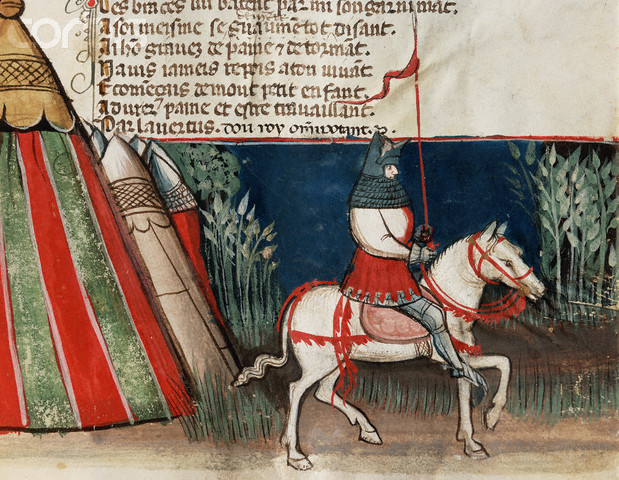

The "code of chivalry" is thus a product of the Late Middle Ages, evolving after the end of the crusades partly from an idealization of the historical knights fighting in the Holy Land and from ideals of courtly love. To different degrees and with different details, they speak of chivalry as a way of life in which the military, the nobility, and religion combine. None of the authors of these three texts knew the other two texts, and the three combine to depict a general concept of chivalry which is not precisely in harmony with any of them. The ideas of chivalry are summarized in three medieval works: the anonymous poem Ordene de chevalerie, which tells the story of how Hugh II of Tiberias was captured and released upon his agreement to show Saladin (1138–1193) the ritual of Christian knighthood the Libre del ordre de cavayleria, written by Ramon Llull (1232–1315), from Majorca, whose subject is knighthood and the Livre de Chevalerie of Geoffroi de Charny (1300–1356), which examines the qualities of knighthood, emphasizing prowess. The meaning of the term evolved over time into a broader sense, because in the Middle Ages the meaning of chevalier changed from the original concrete military meaning "status or fee associated with a military follower owning a war horse" or "a group of mounted knights" to the ideal of the Christian warrior ethos propagated in the romance genre, which was becoming popular during the 12th century, and the ideal of courtly love propagated in the contemporary Minnesang and related genres. In English, the term appears from 1292 (note that cavalry is from the Italian form of the same word). Therefore, during the Middle Ages, the plural chevalerie (transformed in English into the word "chivalry") originally denoted the body of heavy cavalry upon formation in the field. The French word chevalier originally meant "a man of aristocratic standing, and probably of noble ancestry, who is capable, if called upon, of equipping himself with a war horse and the arms of heavy cavalryman and who has been through certain rituals that make him what he is". In origin, the term chivalry means "horsemanship", formed in Old French, in the 11th century, from chevalerie (horsemen, knights), itself from the Medieval Latin caballarii, the nominative plural form of the term caballārius. God Speed by English artist Edmund Leighton, 1900: depicting an armoured knight departing for war and leaving his beloved The code of chivalry, as it stood by the Late Middle Ages, was a moral system which combined a warrior ethos, knightly piety, and courtly manners, all combining to establish a notion of honour and nobility. Over time, its meaning in Europe has been refined to emphasize more general social and moral virtues. Originally, the term referred only to horse-mounted men, from the French word for horse, cheval, but later it became associated with knightly ideals. The term "chivalry" derives from the Old French term chevalerie, which can be translated as " horse soldiery". It arose in the Carolingian Empire from the idealisation of the cavalryman-involving military bravery, individual training, and service to others-especially in Francia, among horse soldiers in Charlemagne's cavalry.


The code of chivalry that developed in medieval Europe had its roots in earlier centuries. All of these were taken as historically accurate until the beginnings of modern scholarship in the 19th century. The ideals of chivalry were popularized in medieval literature, particularly the literary cycles known as the Matter of France, relating to the legendary companions of Charlemagne and his men-at-arms, the paladins, and the Matter of Britain, informed by Geoffrey of Monmouth's Historia Regum Britanniae, written in the 1130s, which popularized the legend of King Arthur and his knights of the Round Table. It was associated with the medieval Christian institution of knighthood knights' and gentlemen's behaviours were governed by chivalrous social codes. Konrad von Limpurg as a knight being armed by his lady in the Codex Manesse (early 14th century)Ĭhivalry, or the chivalric code, is an informal and varying code of conduct developed in Europe between 11.


 0 kommentar(er)
0 kommentar(er)
